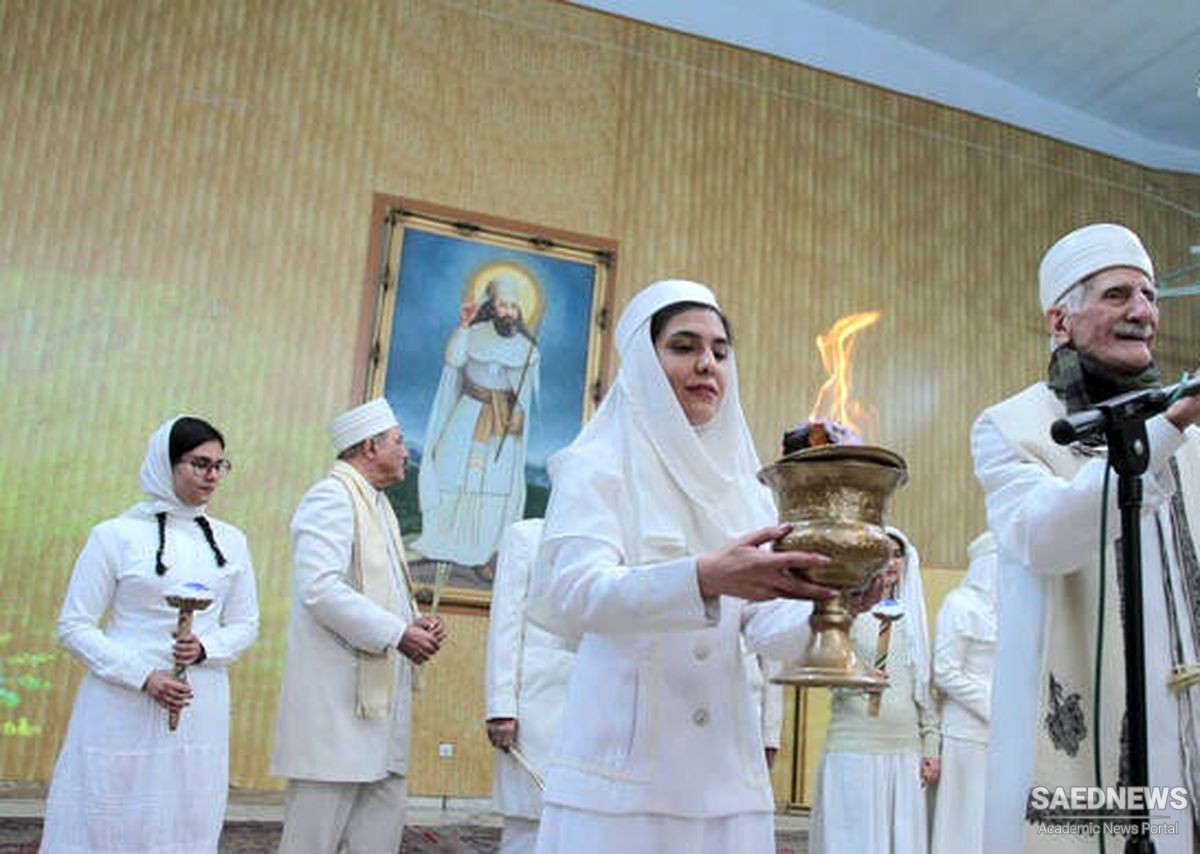Jashan is a ceremony for thanksgiving and memorializing. It is performed during the gahambars and Navruz but it may be performed at any time that people want to express gratitude and happiness, as for a wedding, a navjote, a housewarming, or the dedication of a new fire temple.
Individuals may also sponsor a jashan for a celebration or in memory of someone who has died. During the jashan the priests sit on the floor on either side of a cloth that contains an afargan, or fire urn, a tray of sandalwood and incense for feeding the fire, and a tray of offerings of flowers, fruit, milk, bread, and frequently wine.
They begin by lighting the fire and offering prayers to consecrate it. They then remember the departed souls of the faithful, starting with Zarathustra and Zoroastrian heroes. They first repeat prayers related to the person or event being celebrated or remembered. In the next part of the jashan the fl owers on the tray before them are exchanged during the recitation of a prayer. The exchange of flowers symbolizes the journey of the fravashis from heaven to the earthly world and back.
They repeat the yatha ahu vairyo and Ashem vohu prayers and the prayers of thanksgiving. The priest calls on the spiritual world to bless the worshippers, reciting a special prayer, the Afringan, for those who sponsored the jashan. The ceremony is then at an end.
The ceremony is an expression of happiness: gratitude for past blessings and joy in the good things in the present and future. The jashan may be a private affair or accompanied by a feast in which all members of the community participate.


 Zoroastrianism, Holy Days and Celebration in Ancient Persia
Zoroastrianism, Holy Days and Celebration in Ancient Persia














































